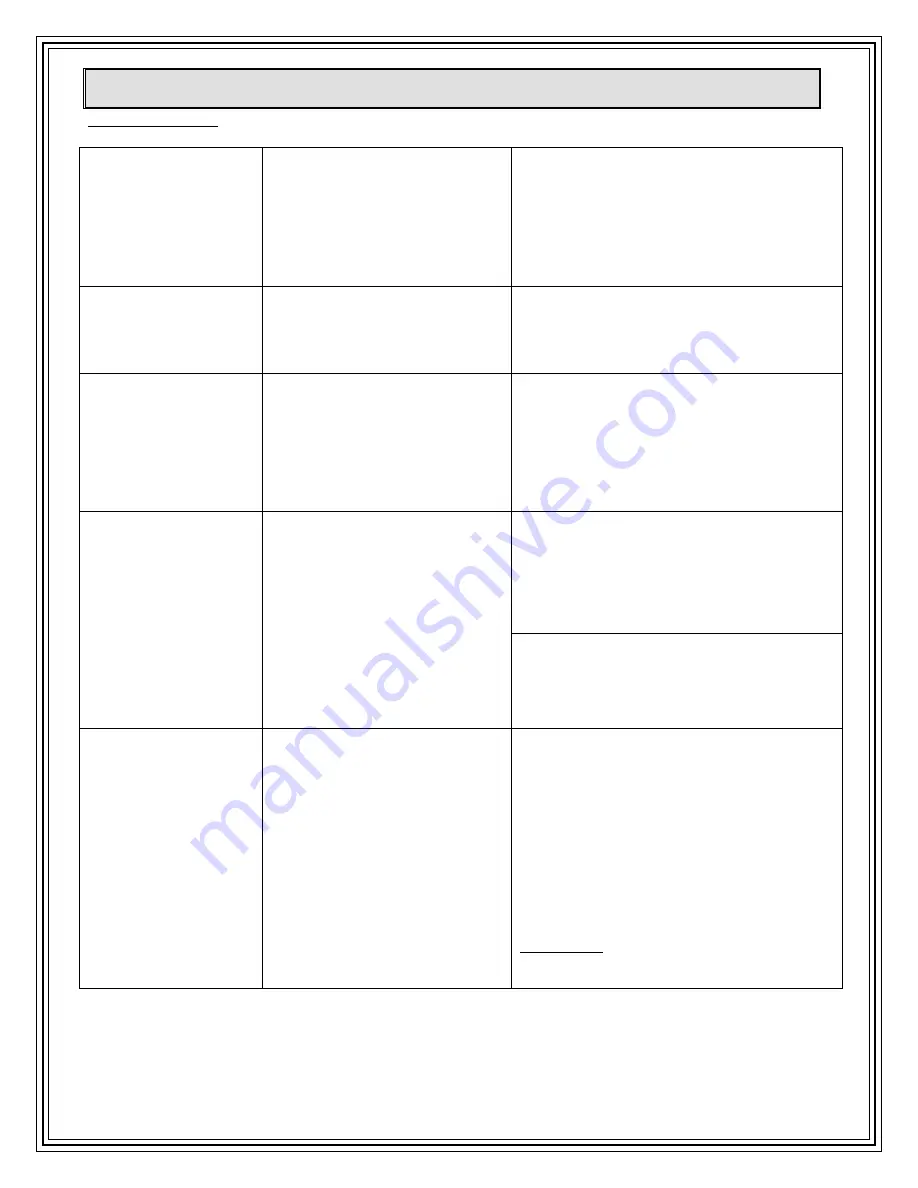
Version
2.0fc
45
APPENDIX B: MAINTENANCE GUIDE
Shut off the power to the unit and allow it to cool off when performing cleaning and maintenance.
Regular Cleaning
Removing and cleaning the Firepot
The firepot can be removed by removing 2 bolts.
Slide the keeper sleeve off of the stir rod gear shaft
exposing the linkage. Rotate the stir rod until the
slot is vertical. Now lift the firepot and the stirring
rod out of the firepot holder. To replace, reverse
the procedure. The stir rod can be rotated by
operating the control board. See control board
instructions.
Removing “Clinkers”
A clinker or ash build up on the bottom of the
firepot may need to be removed for proper
operation. NOTE: For your Safety, only remove
clinkers from stove when unit is cool. Wear gloves
and eye protection.
Soot and Fly-ash Build Up
The ash must be emptied every day, (or as
required). If the ash is not emptied regularly, ash
will build up under the firepot and block proper
air flow to the fire pot putting the fire out.
When
the stove is cold, the firepot can be pulled out and
removed for a thorough cleaning. Also, check the
drop tube (where the corn drops into the firepot) for
blockage.
Remove ash when it is
COOL
. Use an industry
approved ash vacuum for removing ash. Dump the
ash into a fire safe covered container. The firepot
may be lifted out (first remove bolts) and remove
the stir rod. Dumb and clean the firepot as needed.
Vacuum the inside of the
COOL
unit and replace
all parts BEFORE starting operation again.
Thorough
Cleaning
Remove the “I” plugs located on each side of the
firebox housing. Insert the vacuum hose into each
of these COOL access ports. Completely vacuum
and then replace “I” plugs. Air leaks will not allow
the stove to burn properly.
Cleaning the Heat Exchanger.
A sliding plate fits over the fifteen tubes of the heat
exchanger. The sliding plate is attached to a small
rod protruding through the front of the stove just
below the louver vent. Push the rod to the back of
the exchanger and then pull forward to the front,
several times. This will effectively remove ash and
debris from the surface of the heat exchanger.
Performing this step often will ensure that cleaning
is an easy task. This cleaning procedure should be
done daily. If buildup is allowed to go unattended,
cleanup will be much more difficult and the
efficiency of your stove will be adversely affected.
CAUTION: Cleaning rod may be hot!
Use a
fireplace glove to protect your hand when using the
cleaning rod to avoid getting burned!















































